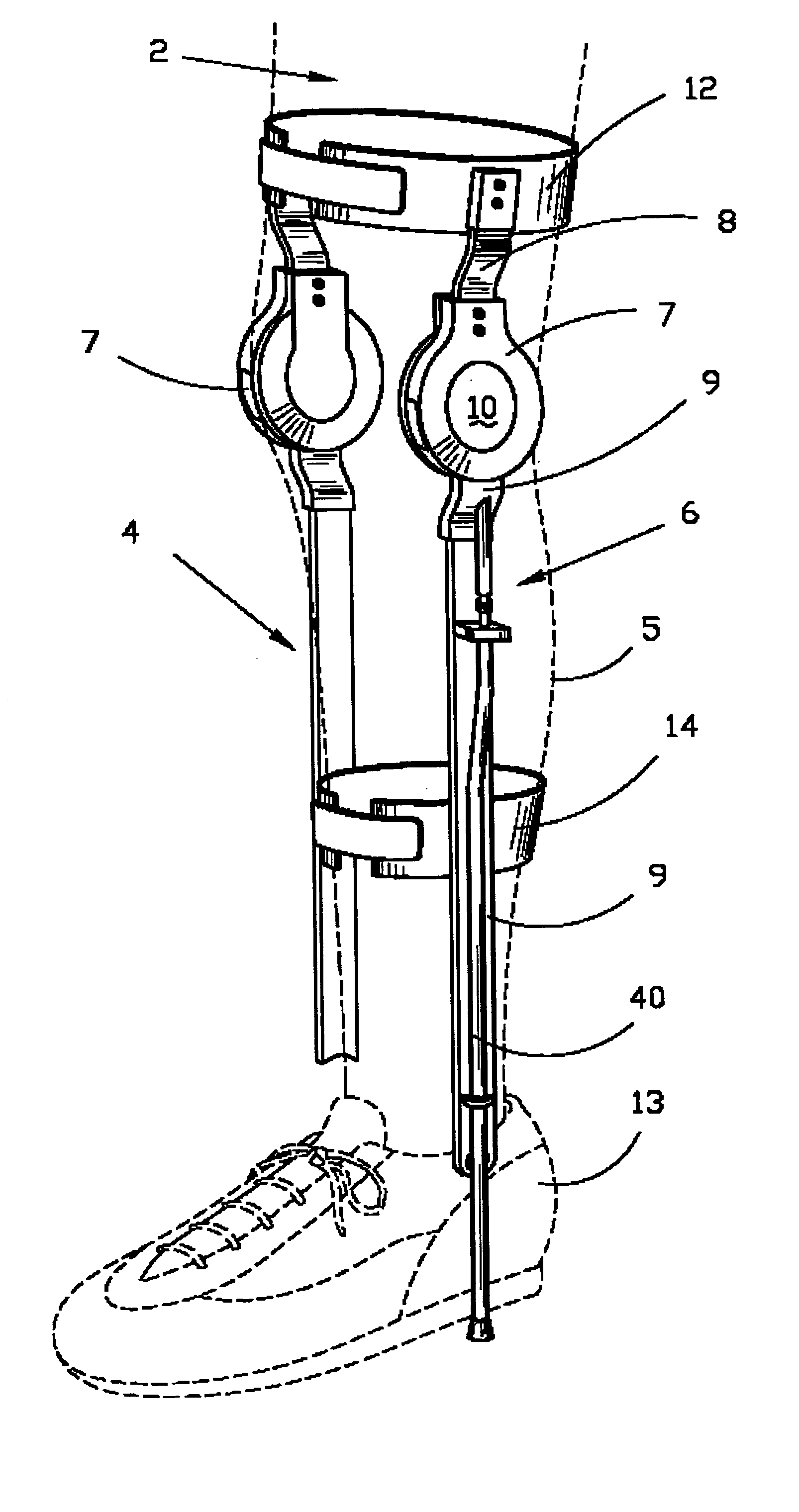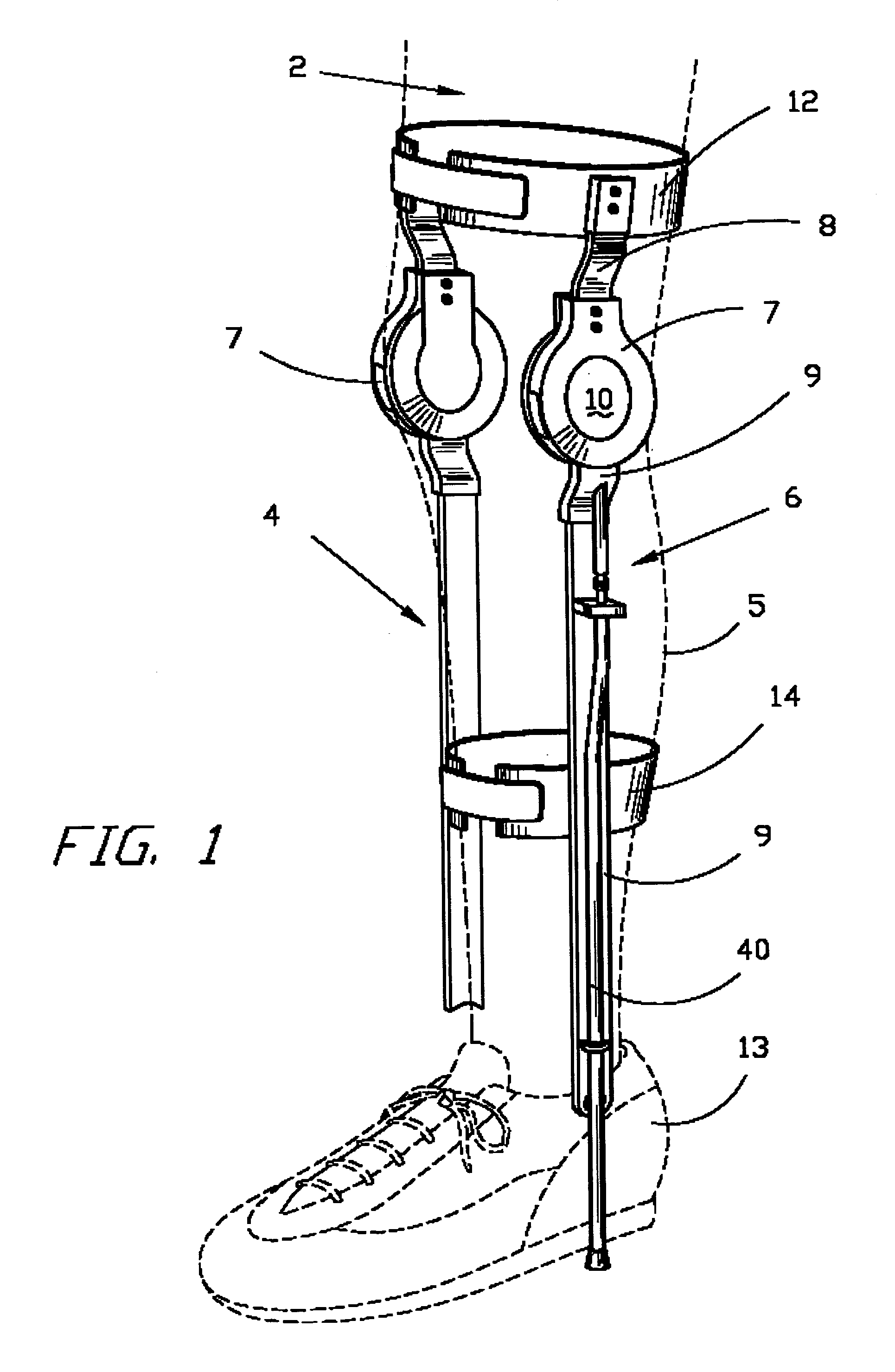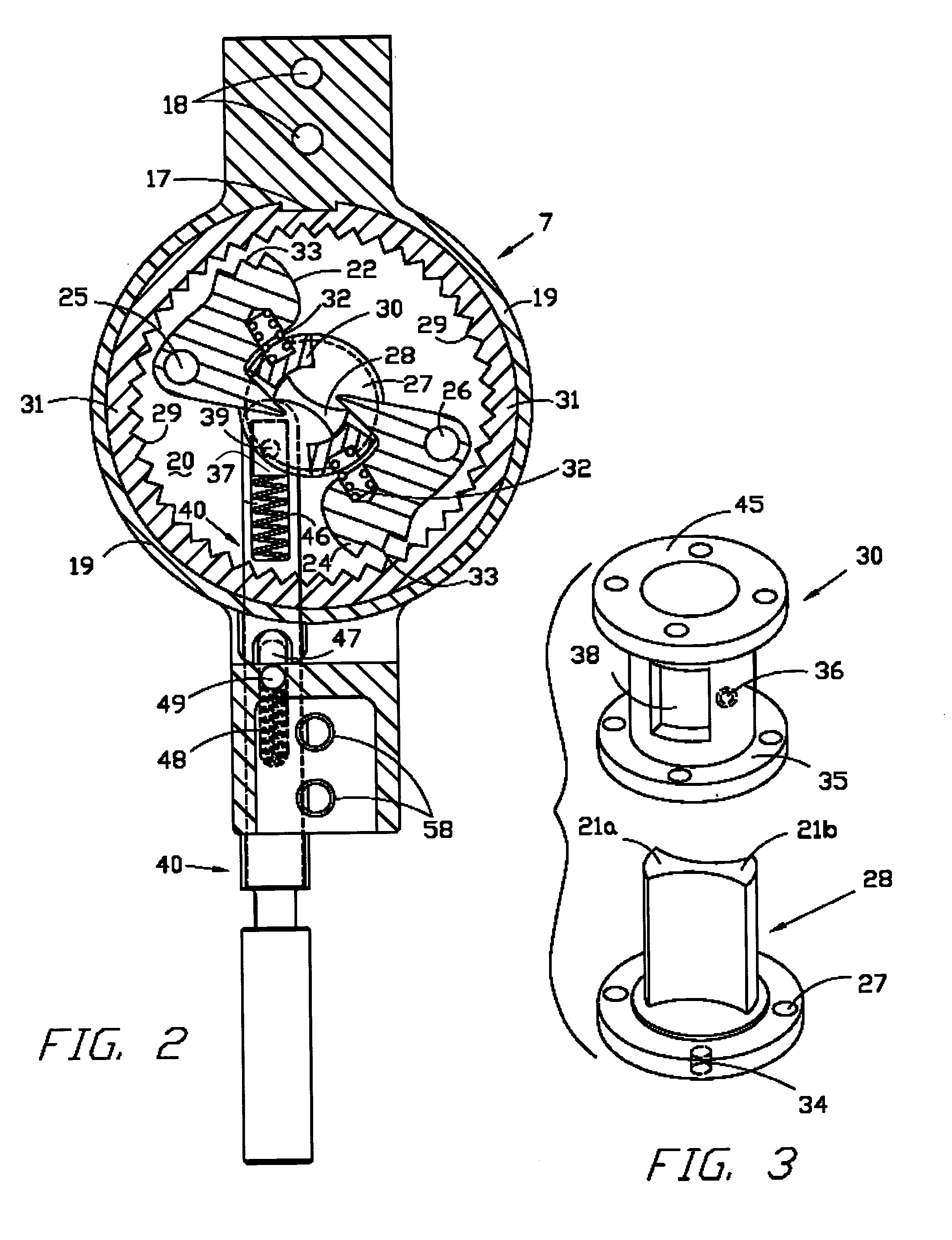Orthopedic leg brace
- Summary
- Abstract
- Description
- Claims
- Application Information
AI Technical Summary
Benefits of technology
Problems solved by technology
Method used
Image
Examples
Embodiment Construction
[0012]It is not known in the art that multiple pawls permit a ratchet wheel to be locked when rotated a distance much shorter than the distance it must rotate when one pawl is used in a knee brace. Two pawls are disclosed in U.S. Pat. No. 4,520,804, but they are employed to enable the user to quickly and easily alter the relative pivotal movement and positioning between upper and lower leg sections. One pawl limits clockwise rotation, and one pawl limits counterclockwise rotation. The double locking ratchet knee joint in U.S. Pat. No. 4,520,804 accomplishes this movement through the use of manually actuatable locking levers. Thus, heretofore knee braces would not lock until the pawl moved a distance of at least one full tooth, during which the user's leg was unsupported. As will be appreciated, herein the pawl can be made to move less than the distance between two teeth. For a better understanding of how this is accomplished a description of the invention in conjunction with the acc...
PUM
 Login to View More
Login to View More Abstract
Description
Claims
Application Information
 Login to View More
Login to View More - R&D
- Intellectual Property
- Life Sciences
- Materials
- Tech Scout
- Unparalleled Data Quality
- Higher Quality Content
- 60% Fewer Hallucinations
Browse by: Latest US Patents, China's latest patents, Technical Efficacy Thesaurus, Application Domain, Technology Topic, Popular Technical Reports.
© 2025 PatSnap. All rights reserved.Legal|Privacy policy|Modern Slavery Act Transparency Statement|Sitemap|About US| Contact US: help@patsnap.com



